Introduction
As you transition your face-to-face lecture content online, you may be tempted to simply recreate your weekly lecture experience by recording and publishing a video of the event. This is an easy way to accomplish the goal, but the result will be several hours of passive and didactic content, offering the online student no possibility of interaction.
Not only does this approach overlook the potential of the online medium, but it could significantly reduce learner satisfaction and information retention. Students in the online space are accustomed to multisensory inputs via computers, tablets, and cell phones. Reducing and segmenting didactic content helps reduce learner fatigue, decreases satiation, and can increase learning performance.
Distilling the Didactic Content
Of course, there is likely going to be information for your weekly lectures that simply needs to be recorded. The idea, however, is to distill only the most critical, passive, one-way information into a recorded event. The best way to accomplish this to think about and extrapolate the times in your lecture when you interact with your face-to-face students: places where you may pause for reflection or ask the students to hypothesize an outcome, moments in your lecture where you draw diagrams on the board, visit websites, tell personal stories, or show a demonstration, or other instances of student interaction.
All of these items can be developed using other methods of online production and should be removed from your didactic content in order to provide a more engaging and meaningful online experience.
In the visualization above, the distilled didactic content is shown as 45 minutes, but, in reality, the remaining content could be anywhere from thee hours to none at all, depending on how much content is delivered through alternate means.
Alternative Delivery Methods
Let’s look at the alternate content delivery methods individually to give you some more insight about how each can be used.
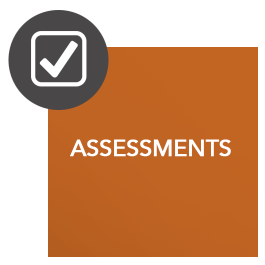
As you consider the assessments in your face-to-face class, explore the possibilities for what other forms your course assessments might take. Do they truly reflect what you want students to be able to do when they walk away from your course?
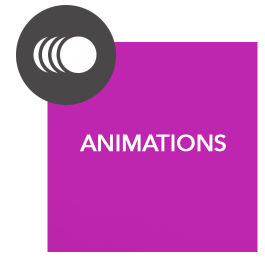
Animations are a great way to help students visualize complicated concepts and ideas. Animations don’t have to be created by a professional designer: There are online tools available to help you build them even if you have no design experience!

Why reinvent the wheel? When properly cited, external content can be very helpful in allowing your online students to explore additional content in detail. Here are some common uses of external content:
- Online articles
- Websites
- Existing videos
- Textbook’s images and diagrams
- Textbook’s end-of-chapter content and activities
- Case studies
- Image libraries
- Guest lectures

Giving online learners the ability to interact with content can be very beneficial. As with animations, you don’t need to be a professional developer to create successful interactive elements. There are a variety of development tools available to help you create things like interactive scenarios, click-to-reveal elements, or drag-and-drop activities.
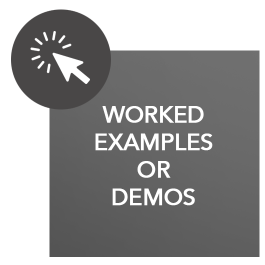
Demonstrations or worked examples are a great way to explain complicated procedures. Some best practices are to:
- Identify or recall underlying principles
- Vary the example scenario or story using the same problem type
- Vary the problem types using the same scenario or story
- Integrate common errors or misconceptions in order to create powerful learning opportunities
- Use faded, worked examples to bridge initial learning with open-ended problem-solving and higher-level application of concepts
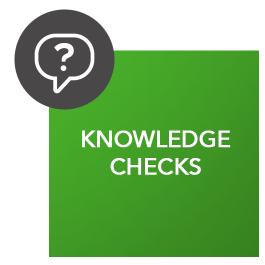
You likely do this throughout your face-to-face lecture and may not even be aware of it. You probably do this instinctually if, for example, you see some confused faces in your class. When building content for online learners, you won’t have this luxury, so it’s important to use your face-to-face experience to build purposeful knowledge checks throughout the content delivery. Some examples include:
- Self-assessment quizzes
- Pauses in lectures for mini-application activities, reflection and questions
- Reflective journals
- Discussions
- Virtually any ungraded activity to check understanding
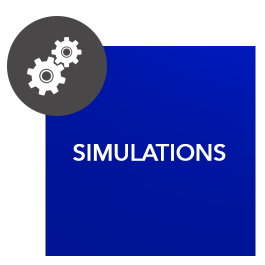
Simulations can be very powerful in allowing students to apply information to real-world situations. Depending on your subject, there may be simulations that you can license and include in your lecture content that will allow your students to experiment with the subject matter and apply those concepts in realtime.

Straightforward as it may seem, the proper use of informational graphics is critical to effective online instruction. Attempts should be made to not only include graphics and imagery that help explain information, but also to decrease those images that are superfluous, which can ultimately distract learners and make online learning more difficult. Images should always include alternative text or descriptions to make images accessible for people with visual impairments and for screen reader users.
Common image formats accepted by most learning management systems include JPEG, GIF, and PNG files. Make sure your images are saved in one of these formats.

Discussions are generally a big part of the online learning experience. You can use discussion threads in an online environment to:
- Connect to authentic application of topics
- Explore individual perspectives and experiences
- Create opportunities for engagement and share expert experiences, scenarios and examples
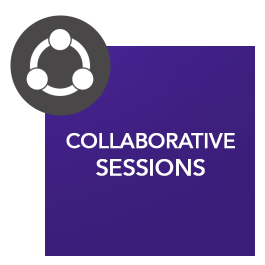
The selective use of collaborative communication in an online environment is important in creating a virtual community. Some of the best uses of collaboration include:
- Office hour sessions
- Group work sessions or presentations
- One-on-one tutoring
- Weekly wrap-ups
Producing the Remaining Didactic Content
Now that you have gone through the exercise of identifying and developing alternative delivery methods for some of your lecture, the remaining “distilled” lecture material should now be recorded using either a video camera, screen recording, or a combination of both.
It is here where we need to apply the concept of segmenting (or chunking) the final product. Learning science tells us that online learners absorb content better in smaller, more digestible pieces than one long-form video. If whatever remains after your lecture distillation is longer than 15 minutes, you should ideally break it up into smaller segments with introductions and wrap-ups for each segment.
Putting It Back Together
Once you have deconstructed your traditional lecture and re-engineered all the elements in order to align with the various technologies available to you, it’s now time to put them back together to create an optimized online lecture experience.
The most important thing to keep in mind as you do this is that written text is critical. A typed introduction, summary and connective narrative will lead students from one asset to the next and will serve as a transitional roadmap.
Online Learning Standards
As you create your online lecture content, it is critical that you keep the following Quality Matters and Online Learning Consortium Standards top of mind:
- QM 4.1: The instructional materials contribute to the achievement of the stated course and module/unit learning objectives.
- QM 4.2: The purpose of instructional materials and how the materials are to be used for learning activities are clearly explained.
- QM 4.3: All resources and materials used in the course are appropriately cited.
- QM 4.4: The instructional materials are current.
- QM 4.5: The instructional materials present a variety of perspectives on the course content.
- OLC: Instructional materials are easily accessible and easy to use for the student.
- QM 6.1: The tools and media support the course learning objectives.
- QM 6.2: Course tools and media support student engagement and guide the student to become an active learner.
- QM 6.4: Students can readily access the technologies required in the course.
- QM 6.5: The course technologies are current.
- QM 8.1: The course employs accessible technologies and provides guidance on how to obtain accommodation.
- QM 8.2: The course contains equivalent alternatives to auditory and visual content.
- QM 8.4: The course design accommodates the use of assistive technologies.

